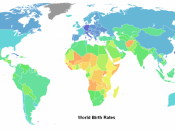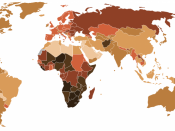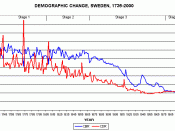The "Demographic Transition" is a model that describes population change over time. As with all models, the demographic transition model has its applications and limitations.
Applications
- The model describes population change over time and can be applied to many countries (based on the change in crude birth rate (CBR) and crude death rate (CDR) over time)
- Can be used for comparison and also prediction from stages 1 to 4
- Outline the population characteristics of societies at various stages of the development
- Population structures can be related to the model
- The model is often applied to lesser developed countries to allay concerns regarding overpopulation, without proof that the underlying dynamics will allow these countries to trace similar evolution paths as the European and other Western countries.
Limitations
- Birth rates in several MEDCs have fallen below death rates (Germany, Sweden). This has caused, for the first time, a population decline which suggests that perhaps the model should have a fifth stage added to it.
However the model does not go beyond Stage 4.
- The model assumes that in time all countries pass through the same four stages. It now seems unlikely, however, that many LEDCs, especially in Africa, will become industrialized
- External influences are not considered. The model assumes that the fall in the death rate in Stage 2 was the consequence of industrialisation. Initially, the death rate in many British cities rose, due to the unsanitary conditions which resulted from rapid urban growth, and it only began to fall after advances were made in medicine. The delayed fall in the death rate in many developing countries has been due mainly to their inability to afford medical facilities. In many countries, the fall in the birth rate in Stage 3 has been less...


